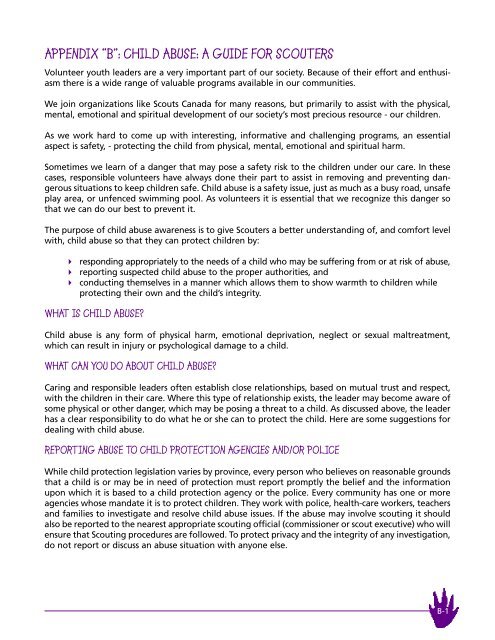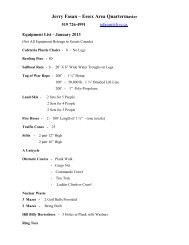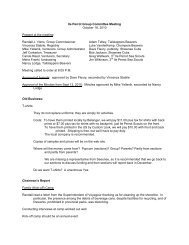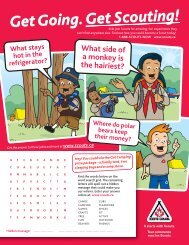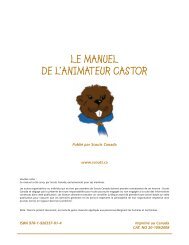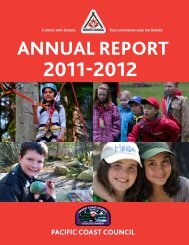Beaver Leader's Handbook - Scouts Canada
Beaver Leader's Handbook - Scouts Canada
Beaver Leader's Handbook - Scouts Canada
You also want an ePaper? Increase the reach of your titles
YUMPU automatically turns print PDFs into web optimized ePapers that Google loves.
APPENDIX “B”: CHILD ABUSE: A GUIDE FOR SCOUTERS<br />
Volunteer youth leaders are a very important part of our society. Because of their effort and enthusiasm<br />
there is a wide range of valuable programs available in our communities.<br />
We join organizations like <strong>Scouts</strong> <strong>Canada</strong> for many reasons, but primarily to assist with the physical,<br />
mental, emotional and spiritual development of our society’s most precious resource - our children.<br />
As we work hard to come up with interesting, informative and challenging programs, an essential<br />
aspect is safety, - protecting the child from physical, mental, emotional and spiritual harm.<br />
Sometimes we learn of a danger that may pose a safety risk to the children under our care. In these<br />
cases, responsible volunteers have always done their part to assist in removing and preventing dangerous<br />
situations to keep children safe. Child abuse is a safety issue, just as much as a busy road, unsafe<br />
play area, or unfenced swimming pool. As volunteers it is essential that we recognize this danger so<br />
that we can do our best to prevent it.<br />
The purpose of child abuse awareness is to give Scouters a better understanding of, and comfort level<br />
with, child abuse so that they can protect children by:<br />
4 responding appropriately to the needs of a child who may be suffering from or at risk of abuse,<br />
4 reporting suspected child abuse to the proper authorities, and<br />
4 conducting themselves in a manner which allows them to show warmth to children while<br />
protecting their own and the child’s integrity.<br />
WHAT IS CHILD ABUSE?<br />
Child abuse is any form of physical harm, emotional deprivation, neglect or sexual maltreatment,<br />
which can result in injury or psychological damage to a child.<br />
WHAT CAN YOU DO ABOUT CHILD ABUSE?<br />
Caring and responsible leaders often establish close relationships, based on mutual trust and respect,<br />
with the children in their care. Where this type of relationship exists, the leader may become aware of<br />
some physical or other danger, which may be posing a threat to a child. As discussed above, the leader<br />
has a clear responsibility to do what he or she can to protect the child. Here are some suggestions for<br />
dealing with child abuse.<br />
REPORTING ABUSE TO CHILD PROTECTION AGENCIES AND/OR POLICE<br />
While child protection legislation varies by province, every person who believes on reasonable grounds<br />
that a child is or may be in need of protection must report promptly the belief and the information<br />
upon which it is based to a child protection agency or the police. Every community has one or more<br />
agencies whose mandate it is to protect children. They work with police, health-care workers, teachers<br />
and families to investigate and resolve child abuse issues. If the abuse may involve scouting it should<br />
also be reported to the nearest appropriate scouting official (commissioner or scout executive) who will<br />
ensure that Scouting procedures are followed. To protect privacy and the integrity of any investigation,<br />
do not report or discuss an abuse situation with anyone else.<br />
B-1


